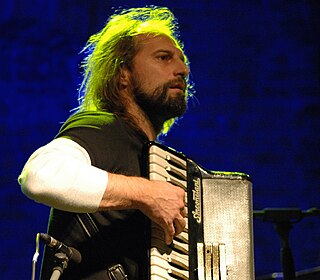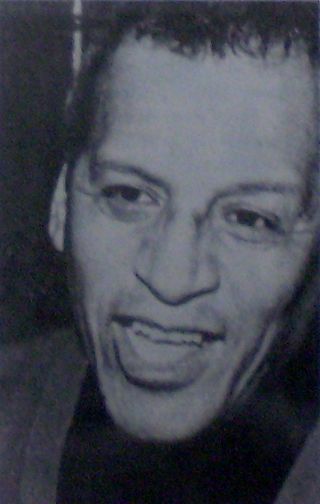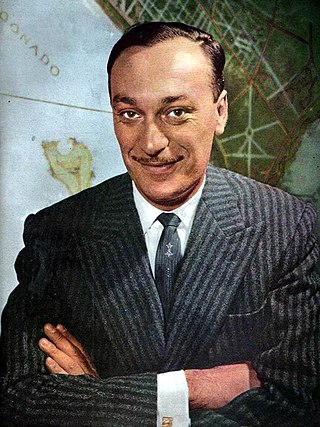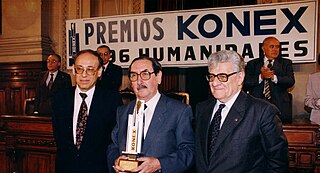Related Research Articles

The music of Argentina includes a variety of traditional, classical and popular genres. One of the country's most significant cultural contributions is the tango, which originated in Buenos Aires and its surroundings during the end of the 19th century and underwent profound changes throughout the 20th century. Folk music was particularly popular during the 20th century, experiencing a "boom" in popularity during the 1950s and 1960s thanks to artists such as Atahualpa Yupanqui and Mercedes Sosa, prominent figures of the Nuevo cancionero movement. In the mid-to-late 1960s, the countercultural scene of Buenos Aires originated Argentine rock, considered the earliest incarnation of Spanish-language rock for having an autochthonous identity that differed from that of England or the United States. It was widely embraced by the youth and since then has become part of the country's musical identity as much as traditional music. According to the Harvard Dictionary of Music, Argentina also "has one of the richest art music traditions and perhaps the most active contemporary musical life.

Atahualpa Yupanqui was an Argentine singer, songwriter, guitarist, and writer. He is considered the most important Argentine folk musician of the 20th century.

Konex Foundation is an Argentine cultural non-profit organization created in 1980 to promote, stimulate, help, and participate in any form of cultural, educational, intellectual, artistic, social, philanthropic, scientific or sports initiative, work, and enterprise, in their most relevant aspects, as defined by its founder and president, Dr. Luis Ovsejevich.

Horacio "Chango" Spasiuk is an Argentine chamamé musician and accordion player.

Mariano Grondona is an Argentine lawyer, sociologist, political scientist, essayist, and commentator. He has been a journalist for several decades, contributing to print media and television, and has authored numerous books. Additionally, he has held teaching positions in several universities, both in Argentina and abroad.

Clorindo Manuel José Testa was an Italian-Argentine architect and artist.

Gyula Kosice, born as Ferdinand Fallik, was a Czechoslovakian-born and naturalized Argentine sculptor, plastic artist, theorist, and poet. He played a pivotal role in defining the concrete and non-figurative art movements in Argentina and was one of the precursors of kinetic, luminal, and hyrdokinetic avant-garde art. His work was revolutionary in that it used, for the first time in international art scene, water and neon gas as part of the artwork.

Hugo Guerrero Marthineitz was a Peruvian journalist, commentator and radio host, who spent most of his professional career in Argentina.
The Buenos Aires Jazz Festival is a music festival first organized in its current form by the city government of Buenos Aires in 2002. The festival takes place in multiple venues, attracting around 36,000 spectators during each of its first few years and over 70,000 in 2012.
Founded in 2002 by its artistic director Ignacio Varchausky, TangoVia Buenos Aires is a non-profit organization for progressive arts - focused on preservation but dedicated to creation - that brings together artists, researchers, producers and cultural institutions for the preservation, development, and promotion of the art of tango in Buenos Aires and around the world. Since TangoVia Buenos Aires understands tango as a constantly evolving living art form, it promotes all of its formats as contemporary and alive.

Paseo La Plaza is a cultural and commercial complex in the San Nicolás neighborhood of Buenos Aires, Argentina. The complex hosts theater performances and various types of congresses and conventions. It also has gastronomic and commercial venues. It is located in the heart of the theater area of Avenida Corrientes, near the General San Martín Theater, the General San Martín Cultural Center and other prominent venues.

Félix César Luna was an Argentine writer, lyricist and historian.

Radio in Argentina is an important facet of the nation's media and culture. Radio, which was first broadcast in Argentina in 1920, has been widely enjoyed in Argentina since the 1930s. Radio broadcast stations totaled around 150 active AM stations, 1,150 FM stations, and 6 registered shortwave transmitters. An estimated 24 million receivers were in use in 2000.

Carlos Casares is a town in Buenos Aires Province, Argentina. It is the head town of the Carlos Casares Partido.

Antonio Carrozzi Abascal, best known as Antonio Carrizo, was an Argentine radio and television presenter.

Teresa Adelina Sellarés, best known as Teresa Parodi, is an Argentine singer and songwriter. She held the inaugural post of Minister of Culture of Argentina from May 6, 2014, to December 9, 2015. She was a deputy to the Mercosur Parliament (Parlasur) representing the nationwide district of Argentina from December 10, 2015, to October 6, 2016. She was elected on the Front for Victory ticket in the 2015 election.

Luis Ovsejevich is an Argentine lawyer and businessman, founder and president of the Konex Foundation, from its creation in 1980. Through it the Konex Awards have been granted annually since 1980 to personalities and institutions standing out for his, her or its achievements in 10 different fields. He made various cultural contributions, such as "Let´s go to the Music" since 1991, which consist in operas, ballets, concerts, tango and comedy adapted specially for children; he decided to open Konex Cultural City in 2005, it is a space where all type of cultural expressions coexist with the objective to contribute to the cultural and artistic enrichment of the community; since 2015 he produce the Konex Festival of Classical Music in Ciudad Cultural Konex.

Pepe Arias was an Argentine actor and comedian.
Nora Aslan is an Argentine visual artist and photographer, known for tapestry design and collage. Her work has been compared to that of Max Ernst, Fred Tomaselli, Hieronymus Bosch, and Matthias Grünewald.
Silvia Rivas is an Argentine visual artist known for her multi-channel video installations. In Latin America she is considered a precursor in the area of expanded video. Her work is characterized by the crossing of materialities and technologies in which she uses both electronic devices and ancestral techniques. Her production is organized in thematic series of video installations, drawings, photographs or objects. Interested in revealing the metaphorical power of different materialities, she uses the electronic medium and the moving image to record stillness, the imminent and the subjective perception of time.
References
- 1 2 3 4 "Fundación Konex {{in lang|es}}". Archived from the original on 2013-10-31. Retrieved 2013-10-28.
- ↑ Buenos Aires Jazz Archived October 31, 2013, at the Wayback Machine